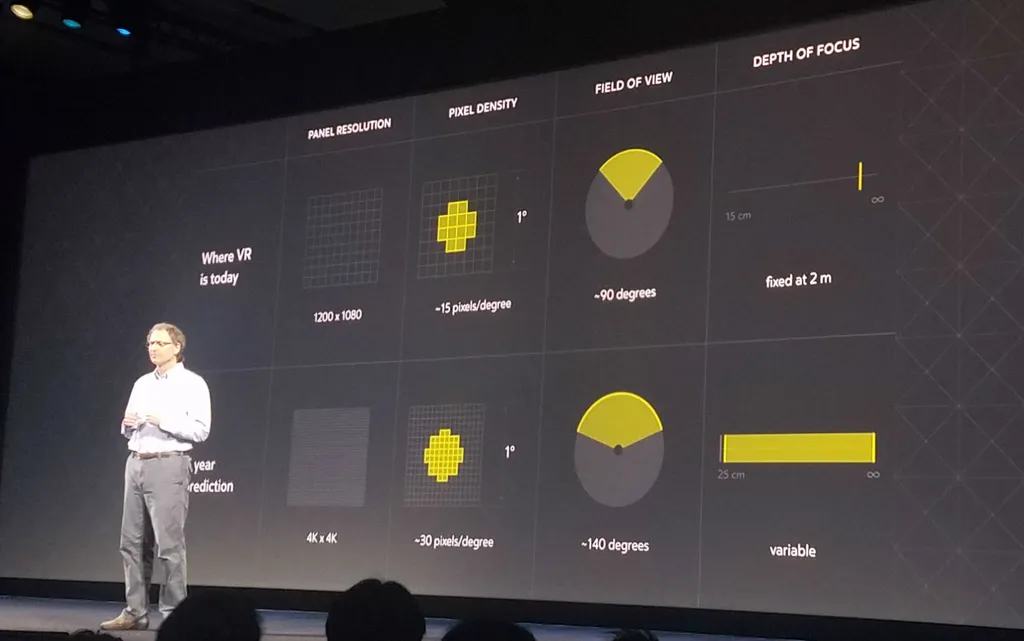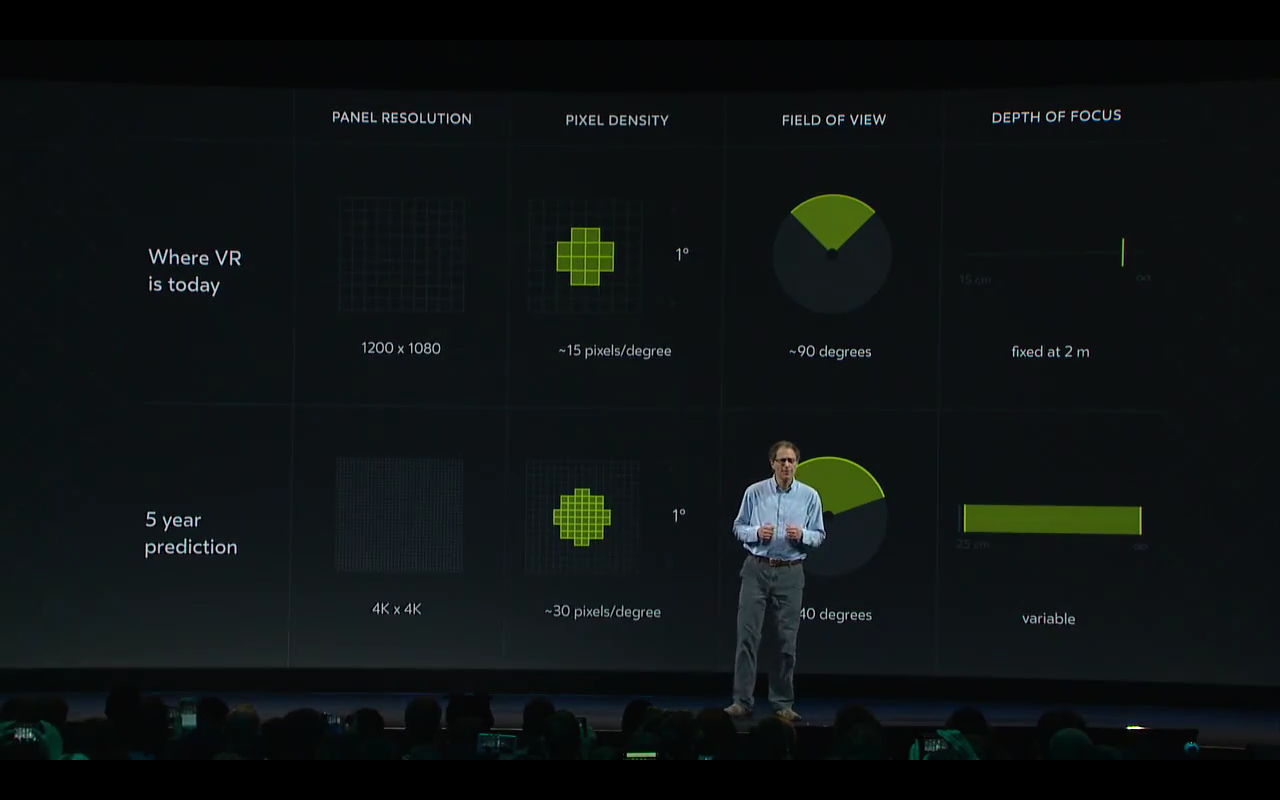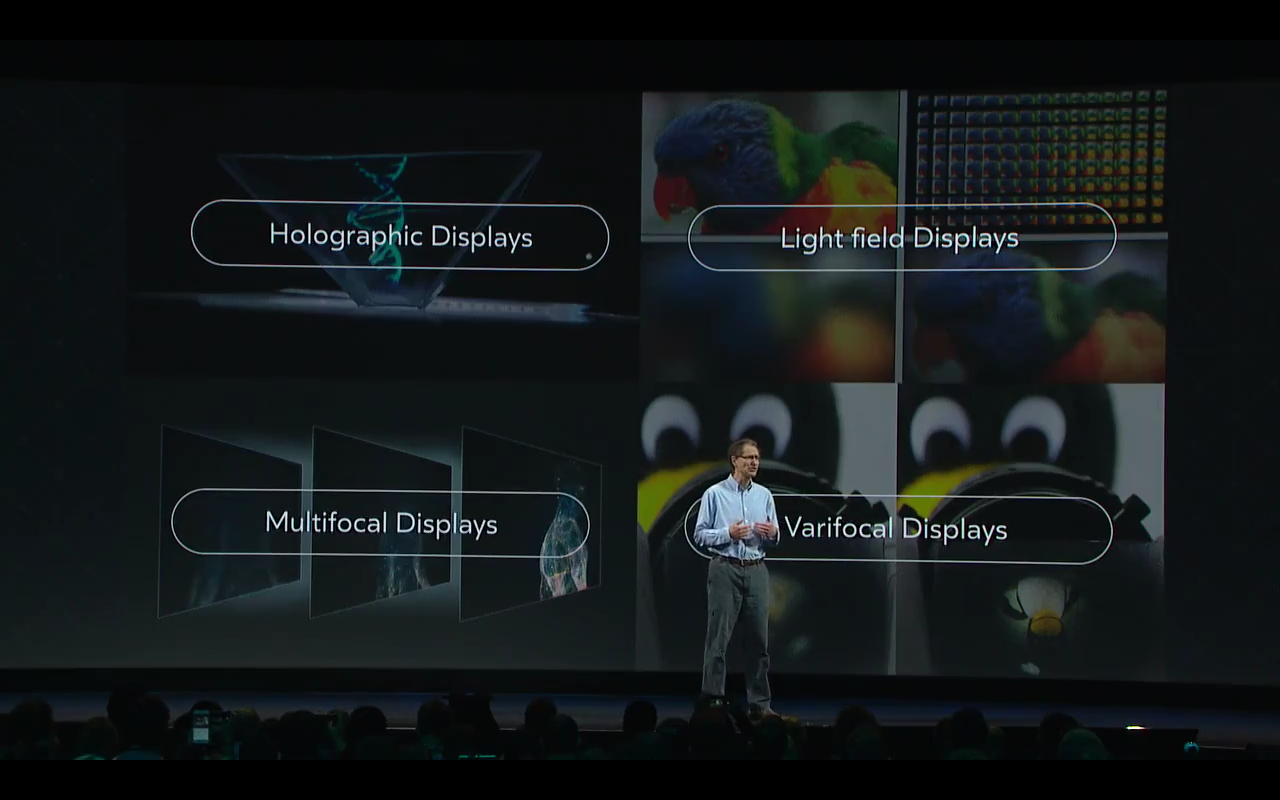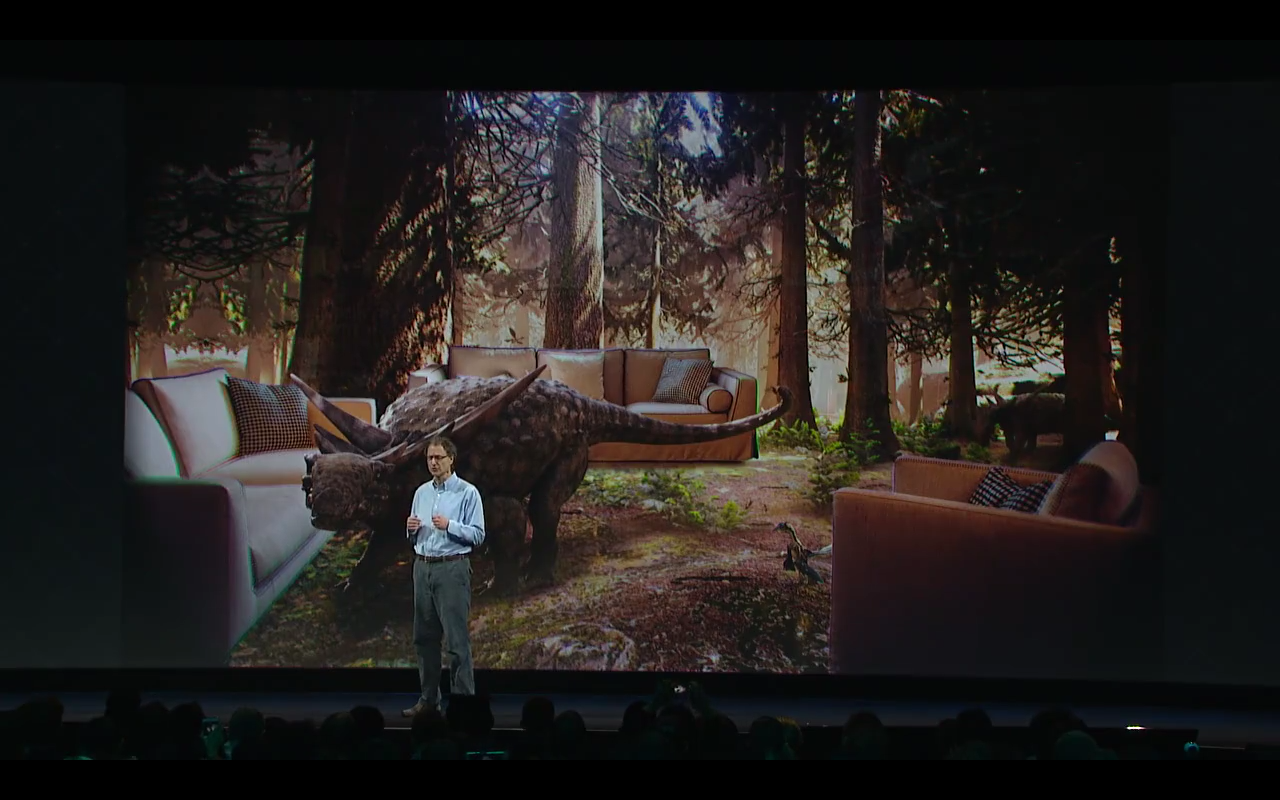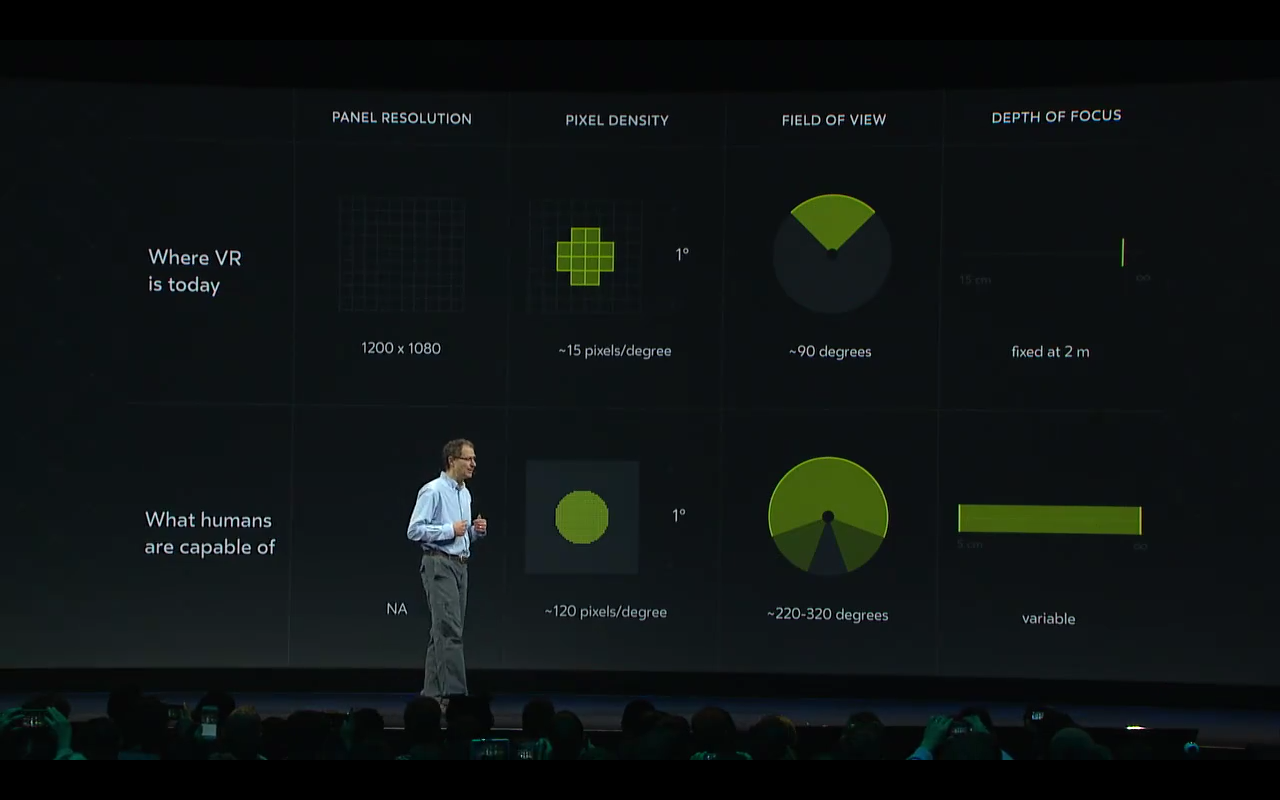Oculus Chief Scientist Michael Abrash predicts dramatic improvements to field of view and resolution for VR headsets over the next five years among many other areas. Save the image above, because come 2021 we can check in and see if Abrash painted an accurate picture for the improvements we can expect.
Practically everything Abrash said whilst “sick as a dog” at his Oculus Connect 3 talk today could have been a major headline in a normal week, but because it’s OC3 we’ll have to make do with cramming it all into one post.
Screen resolutions are a hot topic in the VR and tech industry as a whole right now, especially with the introduction of new 4K ready games consoles like the PlayStation 4 Pro and Project Scorpio. High-end VR headsets currently utilize either 1080p or 2K displays, but Abrash predicts they’ll have shifted to 4K by 2021. That’s good news for those of us that find VR’s screen door effect distracting, though Abrash has previously stated that we’ll have to reach resolutions of 16K for VR to match our eyes.
What complicates resolution, however, is pixel density, or rather its usage. As Abrash explained, we could choose to use 4K screens to prioritize boosting either resolution or field of view (FOV) within a headset, though one would come at the expense of the other. In this mind, the industry may side with the latter once larger viewing angles are made available.
In fact, Abrash predicted that headsets may have reached a 140 degree FOV by 2021. Ultimately, he expects the visual capabilities of VR headsets to be “good enough to pass a driver’s licence test” by that time, though the industry will need a breakthrough in optics that he’s “confident” will be made soon.
Finally, the legendary developer talks about depth of focus. This is a much more complicated topic, referring to our eyes’ ability to adjust to focus on different objects at different distances. With current VR, everything appears focused as if you were staring at it from 2 meters away. It’s not a big problem in Abrash’s eyes (quite literally given that he described his eyes to be as limited as the Rift’s display), but it would be “good to fix”.
To do so, we might need to turn to new types of displays including holographic, light field, multifocal, and varifocal types. If you’ve never heard of any of those don’t worry; Abrash noted that none of them were good enough to tackle the issue yet, especially for a headset. He wasn’t sure which would provide the solution, but was confident that at least one would provide a “good” depth of field in the next five years.
Elsewhere, Abrash went far beyond the headset’s optics in predicting the next five years of VR. Headsets will get lighter and more comfortable, though wireless PC-based kits may still be further out. Audio didn’t seem to pose the same challenges, with significantly improved 3D audio propagation predicted in five years. He seemed bullish that Oculus Touch-like controllers will be a primary input device for a long time yet. It’s “quite possible”, in Abrash’s opinion, that Touch and its contemporaries could be seen as the “mouse” of VR. Despite this, he also stated that hand tracking should be important to headsets five years from now.
He also suggested, though, that if eye-tracking doesn’t improve quickly enough it could throw off his predictions. This tech needs to be “virtually perfect” for “core VR technology” like foveated rendering, a potentially essential technique in which hardware needs only completely render the area of a display you’re looking at. It’s a tricky subject, but Abrash described it as “so central” to the future of VR he believed it would be solved in five years, though it was the “single greatest risk factor” in his predictions.
Another big part of Abrash’s predictions was what he described as ‘augmented VR’, referring to headsets that expand into the real world with virtual images. It essentially sounded like he was talking about improved versions of mixed reality headsets like HoloLens. Somewhat surprisingly, Abrash thought this would be “so important” to the tech’s future that issues with real world capture and other areas would be overcome in the next five years and the lines between virtual and real realities will “blur”.
Augmented VR will also necessitate the creation of virtual humans, which Abrash described as an essential social VR experience. This may be, however, “the single most challenging aspect” of VR as a whole given the incredible complexity of accurately replicating them in real-time. However, the developer predicts big strides in facial animation and body tracking among other areas over the next five years.
That’s a lot of fascinating predictions, each with a lot to dig into. If Abrash is right? He wants to be using these new systems and technologies for work collaboration apps. “Done well enough, that’s the most productive solo working environment I can imagine,” he told the crowd.
The five year future of VR looks bright in Abrash’s eyes, but take a look at the picture below. This was a slide taken at the start of the presentation, showing the capabilities of the human visual system. It far outstrips even his five year prediction.
Like Abrash said at the beginning of his speech, we’ll always be hoping that current VR could be just a little bit better, but his vision of the future gives us plenty to look forward to for now.

